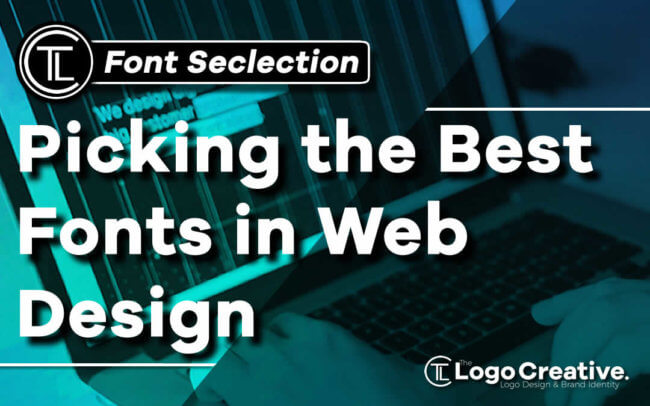Web design is a central feature of every user’s experience. Every detail of the design directly impacts the site’s usability. In this article we give some advice about Picking the Best Fonts in Web Design
Font choice is an integral part of the design, and something your web design agency should never overlook. Think of all the different uses of fonts on the Internet – large headlines and bold blocks of text to smaller-sized text in body copy and everything in between.
It quickly becomes clear that font choice is not just a crucial part of web design, it’s a combination of art and science.
Although we have come a long way since the humble beginnings of the Internet, typography is still as relevant today as it was back in the day.
Both self-employed web designers and recognized San Francisco creative agencies should take their time and consider font choice with seriousness and focus.
Below are three questions you should always ask yourself before choosing fonts for your brand-new website. If you’re thinking about adding new fonts or styles to an already existing website, you should always consult with a professional website design company in Manchester.
Table of Contents
What Is the Site’s Mood and Purpose?
Fonts have personality. Do you want a font that is the font equivalent of a floral shirt and Bermuda shorts or a crisp business suit? Or are you looking to mix and match the various sections of the content?
Remember, you can only choose the right font if you always keep in mind the nature of the content and target audience.
But since using the Times endlessly gets boring and a quirky new pictorial font easily outlasts its welcome, the key is to strike a balance between trusted classics and fashionable, and novelty-laden personal favorites.
For body text, it’s always advisable to use a non-gimmicky, legible, and formal font like Helvetica or Garamond. Sure, there’s nothing wrong with a bit of character but be wary of going overboard.
Using highly characteristic display fonts (think Ravie in the image above) for extensive texts is unnecessary. If you want the typography on your website to stand out from 99% of the web, try using distinctive yet sufficiently low-key fonts that do not upstage the actual content.
You can get more creative with headings, banners, and text bites by using your favorite display fonts. But remember that most end-users only have a limited number of standard fonts installed on their computers.
If you want your supercool and creative font to show up as intended around the world, convert it to a graphic or source it from a web font service.
Should You Use Serif or Sans Serifs?
A quick way to organize font choices is to categorize them into serif or sans serif typographically. Most of us know what these terms mean. But for newbies – serif fonts have ‘feet’ at the end of the letterforms while sans serifs don’t.
You can see this difference clearly in the snapshot above, which includes the classic serif font Garamond and the sans serif Admisi Display.
They say that serif fonts provide continuity and engagement, thereby improving readability, but detractors (read: sans serif supporters) call that a typography myth. Generally, serif fonts are more traditional and ‘old style’ while sans serif fonts are perceived to be more modern and futuristic.
However, these broad adjectives can be easily challenged with fonts from both categories that defy such classification.
Whether you choose Serif or Sans, both categories retain great choices. To learn more about type classifications, start by looking up commonly used categories like the geometric, humanist, old-style, modern, transitional, and slab serif.
You can always come up with your own groups and labels for your collection of typefaces. That way, you can get more organized and easily reach out for the type of font you need.
Should the Fonts Contrast or Correspond?
When two design elements are placed next to each other, they only have a lasting impact if they correspond or contrast. In the current context, this means that multiple fonts should only be placed together if they match (correspond) or present an engaging divergence (contrast).
However, if you use two fonts that are similar yet maintain some distinction, you will distract the reader from what’s important: the content. The minute differences will surely prevent the focus needed.
Of course, there’s rarely any need to use multiple fonts if one does. So, if you are happy with how your web page looks using a single typeface, do not introduce another typeface without reason.
By using different weights (Bold, Regular, Light, etc.) and styles (Italics, Condensed, etc.), you can have effective variation using the same font, so it’s always useful to work with fonts that come from a large and extended type family.
Conclusion
We hope this advice about Picking the Best Fonts in Web Design has helped. The way you choose fonts for your web design projects will have a vital impact on the performance of the sites you create.
Take a close look at the tips described above and see how you can implement them in your work.
These are useful and practical tips every website will benefit from. If you are a part of a web design agency’s team, share these tips with your teammates, it will improve your teamwork and make your project the best it can be.
Check out some more creative agencies in San Francisco.
Join The Logo Community
If you would like more personal tips, advice, insights, and access to our community threads and other goodies join me in our community. You can comment directly on posts and have a discussion.


